Ravenna
We park in Largo Giustiniano where there's a very large car park just behind San Vitale Basilica which costs just 3 euros for the whole day. Ravenna is famous for its UNESCO recognized early Christian churches with their mosaics and out of the 8 UNESCO sights 5 are included in the Ravenna mosaics ticket which costs €9.50 (October 2019). So our first stop is to buy the ticket. It's about half past nine and there are very few people about so early so first we go to visit the Mausoleum of Galla Placidia, built in the first half of the 5th century. In the spring there's a two euro supplement but not at the moment. Probably because it's very small and you are supposed to stay inside for no more than 5 minutes. When we get there there's no one checking yet so we go in to get an idea of the place, back out to read the information panels and then in again for an informed look. As with many of the UNESCO monuments in Ravenna this building too has subsided, giving it a somewhat squat appearance. Inside, the ceilings of the small building are completely covered by mosaics. The main theme is of a deep blue night time sky with stars which provide a background for the two main mosaics of Saint Laurence and the good shepherd, as well as doves and deer.
Basilica di San Vitale, built between 526 and 547 is octagonal in shape with an enormous dome. Once again the mosaics draw the attention, especially the Royal Couple Giustiniano and Teodora and their courts,
although the architectural structure of the basilica itself with its many arches is also fascinating. Especially striking is the contrast between the splendour of the ancient mosaics inside and the almost modern austere red brick exterior.
although the architectural structure of the basilica itself with its many arches is also fascinating. Especially striking is the contrast between the splendour of the ancient mosaics inside and the almost modern austere red brick exterior.
It's about eleven o'clock by the time we are out and walking through the centre of Ravenna, through Piazza del Popolo and to Piazza San Francesco where there's the tourist information office and the church of the same name. San Francesco is well worth a visit also for its fascinating flooded crypt where goldfish swim.
Entry to the church is free and it costs 1€ to illuminate the crypt if the person before you hasn't obliged. Next stop before lunch is Basilica di Sant'Apollinare Nuovo, another red brick church with fine mosaics which are described well here https://en.m.wikipedia.org/wiki/Basilica_of_Sant%27Apollinare_Nuovo .Once again, we have a look (fortunately seats are provided because a lot of neck-craning is involved), then read up on the mosaics and then have another look. These are perhaps the most spectacular of the mosaics of the five buildings included in the mosaics ticket.
Entry to the church is free and it costs 1€ to illuminate the crypt if the person before you hasn't obliged. Next stop before lunch is Basilica di Sant'Apollinare Nuovo, another red brick church with fine mosaics which are described well here https://en.m.wikipedia.org/wiki/Basilica_of_Sant%27Apollinare_Nuovo .Once again, we have a look (fortunately seats are provided because a lot of neck-craning is involved), then read up on the mosaics and then have another look. These are perhaps the most spectacular of the mosaics of the five buildings included in the mosaics ticket.
It's lunchtime by now and we have been peering at mosaics all morning, fortunately there is a free toilet near the cloister on the way out. We hoped to bump into somewhere inspiring for lunch, not having discovered anything special on the Internet but Ravenna does not oblige. In the end we go to Melarancio for a piadina. It's ok although I object to the fact that the lady preparing them takes such good care of them with bare hands.
We sit a while in a little square Piazza dell'Unità d'Italia, behind Piazza del Popolo, and then look for somewhere interesting for coffee, but in the end give up and drink a Cappuccino in an anonymous bar on the way to the Battistero Neoniano which is the oldest of the monuments, built at the end of the 4th century and is once again octagonal. The ceiling mosaic shows John the Baptist baptizing Jesus in the Jordan River. The river itself is personified as an elderly man holding a reed.
The Baptistry is right next to the Archiepiscopal Museum which also includes the Sant'Andrea or Archiepiscopal Chapel. This is small but the mosaics are really interesting, including the golden ceiling with 99 different species of birds, some local, intertwined with lilies and roses and the symbols of the Evangelists in the vaults.
The Museum also hosts in particular some fragments of mosaics including a fine Madonna, it's nice to be able to look at them close up for a change, and the beautiful and intricate Ivory Cathedra, the bishop's seat of the Byzantine era (6th century)
and the Easter calendar of the same period. As we come out we walk through the Cathedral and notice the trompe l'oeil benches and fine pulpit similar to the one in the museum. It's about half past four so we settle for a longish stroll around the centre before heading back to the car.
and the Easter calendar of the same period. As we come out we walk through the Cathedral and notice the trompe l'oeil benches and fine pulpit similar to the one in the museum. It's about half past four so we settle for a longish stroll around the centre before heading back to the car.
Ravenna's mosaics and early Christian UNESCO monuments are well worth a visit, although the immense history of the buildings and the mosaics themselves for me remained an abstract fact, perhaps due to the fact that the mosaics are so well conserved/restored or because of the inevitable additions and changes to the buildings over the centuries or because for me red brick can never have the poetry of the pure stone used in other cathedrals. Ravenna is a pleasant city to wander around and in one day, slowly, we were able to see its most important monuments.


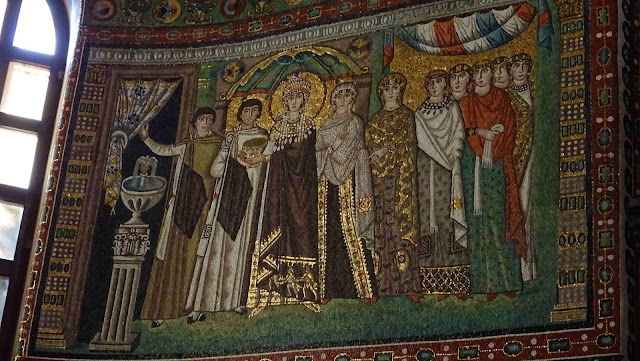

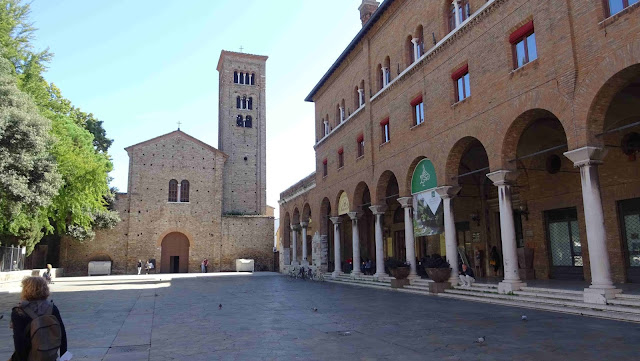

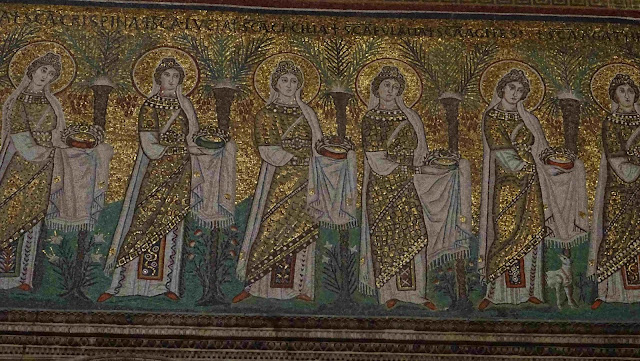
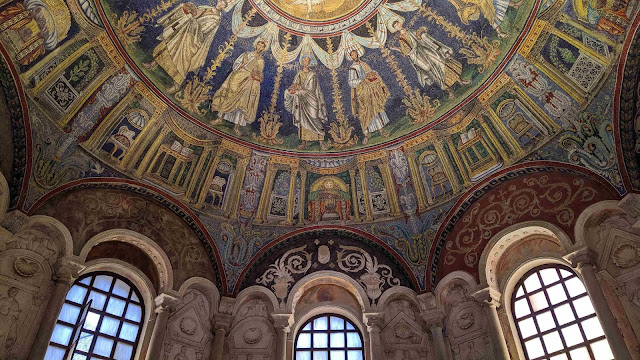
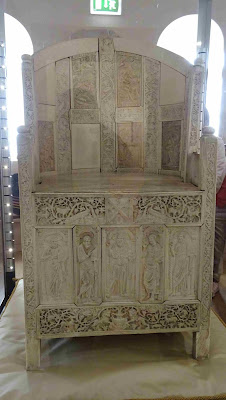

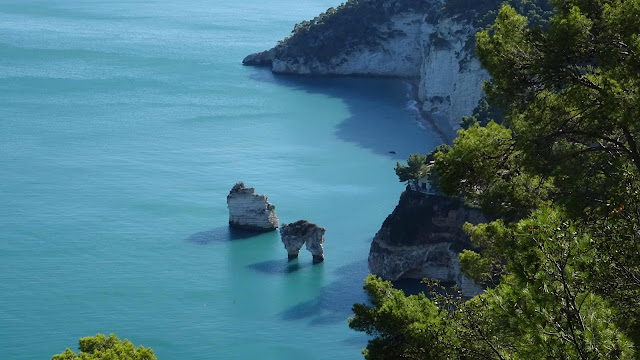
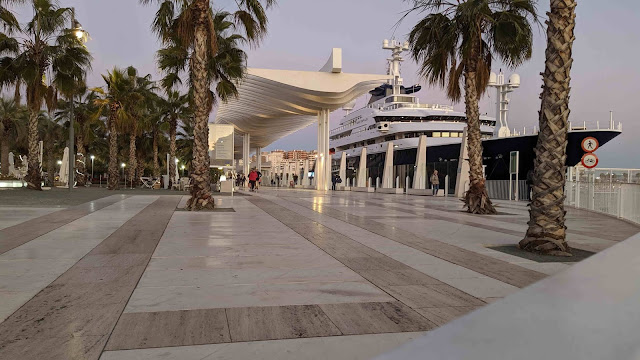



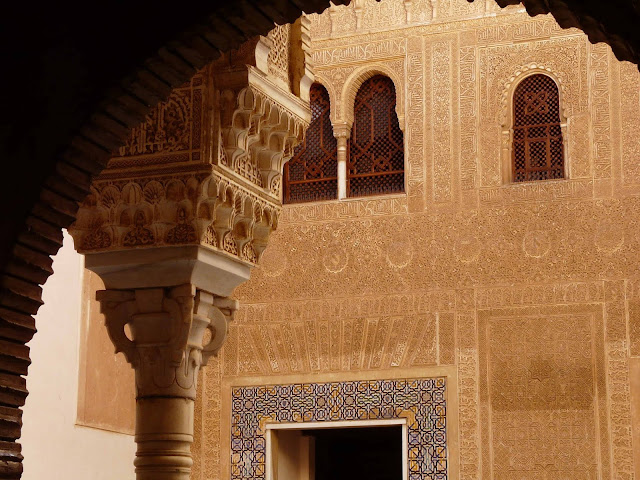
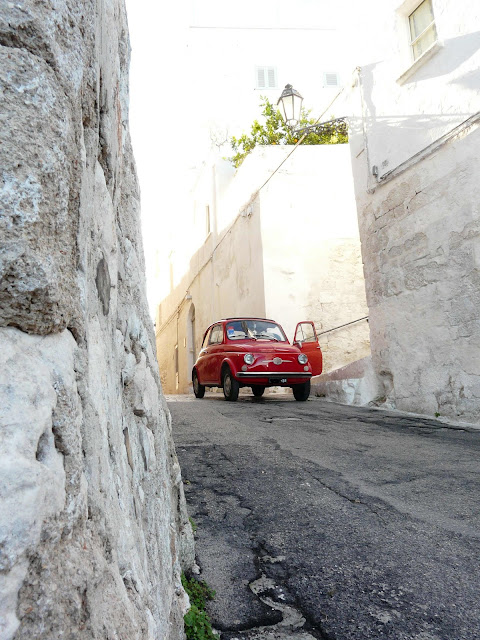
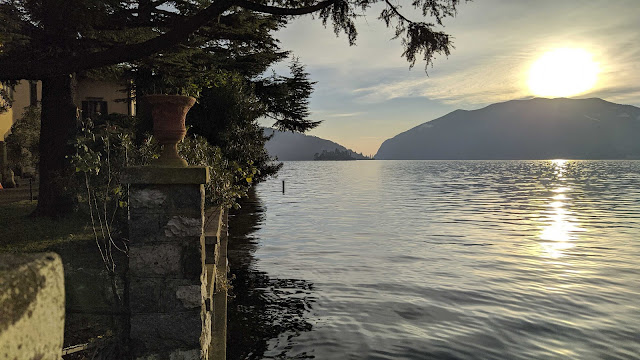

Comments
Post a Comment